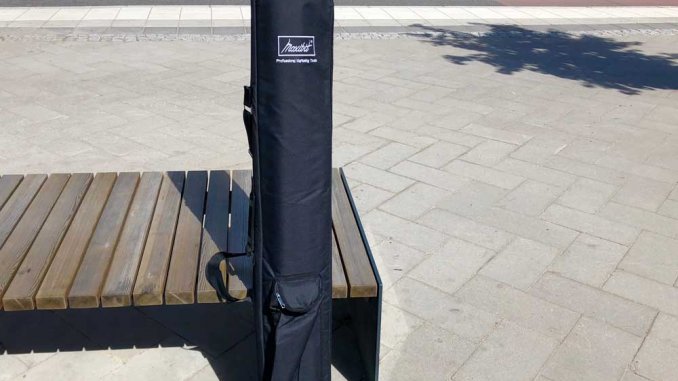
I recently met with an HR Manager at a large international company, her team, and representatives from their Marketing team to talk about recruitment marketing, job advert optimization, and employer branding, as I have done countless times before.
”HR and Marketing are going to start collaborating more!”
The HR Manager cheerfully said to the group: “To kick things off today, the reason why we are here today and why we’ve invited Peter to share his knowledge with us is that HR and Marketing are going to start collaborating more!”
The first thought that struck me was “That’s really great news!” which I also expressed. The second thought, which never left my head, was “Well It’s about time, isn’t it! It’s 2018!”
Sadly, that second thought has struck me more often than I can count when meeting with both small and big employers. Just replace 2018 with 2017, 2016, 2015, 2014, 2013, 2012…
I can’t even tell you how many times I’ve heard HR people say something along the lines of “I don’t know how to make a job ad attractive, I’m not a marketer!” and Marketing people say “Well, we don’t get involved in the job ad writing at all, HR does that.”
You might also like: Why should marketers care about job ads?
The good news
In the past, often times, the HR department has been seen as a mossy institution with no ties to external communication and Marketing and Communications teams have done their own thing and not necessarily realized the full value of collaborating with HR. Until now.
Something great is brewing within both HR and Marketing. A new generation of HR and Marketing folk are taking the reins and more and more companies are starting to understand the true value of inter-departmental collaboration.
Times are clearly changing and many organizations realize that they need to roll up their sleeves across all departments in order to become truly attractive employers in order to attract and retain the best candidates on the market.
A goldmine ready for mining through the power of collaboration
Marketing teams are slowly but surely realizing that the HR team is sitting on a goldmine in terms of potentially massive marketing channels, i.e. the company’s own career site, visibility on job boards, ambassador programs and more.
HR teams are also realizing that they need help. Help with ‘selling’ the company, its culture, and employee benefits, help with writing great job advert copy that stands out and sparks interest, and help with getting job ads SEO’d and searchable.
All this combined with the new generation’s focus on continuous learning and knowledge sharing is a solid foundation for collaboration and finding new, better ways of working.
HR + Marketing + collaboration = Recruitment marketing squared
Getting to the point of actually thinking collaboratively and wanting to do better, achieve more, learn, explore and measure is a huge leap in the right direction. So where do you start?
Well, once you start turning over stones, you will most likely find a slew of improvement areas in your pre-hire/talent attraction process, but do not let that overwhelm or stop you. It’s ok to start small, as long as you start somewhere.
Here are four things Marketing and HR can take action on together today:
1. Send out a quick employee-survey to get to know your target audience
In order to get off on the right foot with improving your recruitment marketing, you need to get to know the people you are marketing to and what they truly value in prospective employers.
A great way of doing that is to whip up an employee-survey where you survey people who have recently joined your company and/or people who have been with your company for a few years.
The goal is to find out why they decided to join your company, what they value and find attractive, and why they have decided to stay with the company. The responses you’ll collect will be a reflection of what candidates with similar experience and background value. In other words, great market research and great candidate/employee insights.
The survey doesn’t have to be fancy at all, a Google Form can often suffice, and you don’t necessarily need too many responses in order to get a grasp of what areas you should focus on when you move on to improving your career site, job ads, and other areas.
2. Review your company career site and find improvement areas
In this exercise, the goal is to identify improvement areas on your career site in order to ensure that it is laser-focused on employer branding, recruitment and your company as an employer.
It’s important to go into this review process with an open mind and with the candidate’s glasses on. Remember, the candidate may know your brand as a corporate or consumer brand, but may not know anything about what it’s like to work for your company.
A few pointers to get you started:
- Is the website talking about your amazing company culture, benefits, colleagues, career opportunities etc?
- Is the copy, imagery and video material geared towards your target audience? For example: If your top recruitment challenge is to attract female engineers and the website is only showing photos, videos, and testimonials from male engineers - you’ve found an improvement area.
- Are you setting realistic expectations for what it’s like to work for your company?
- From a user experience point of view, does the website work equally well on desktop, tablet, and mobile devices and is it easy for candidates to find information and open vacancies?
3. Apply to a job and get a feel for your company’s candidate experience
Once you have found one of your job ads on your career site, try to apply for it together. Is it easy, or hard? What happens when you have applied? Are you sending automatic confirmation emails and what do they say?
The goal here is to get a feeling for your candidate experience and determine if any fields/steps in your application process can be improved/removed. A complicated, confusing or lengthy application process is a top reason for candidates abandoning a job application.
Changing the application form may be a longer project, but changing the content of the response email from the bare minimum “Thank you for your application! Kind regards, HR” to a meatier, more informative email that sets correct timelines and expectations for next steps and invites the candidate to get to know your company some more by following your social media channels or through a link to a career related video on YouTube is easy.
4. Write the perfect job ad together
This is another great way to get the team collaboration juices flowing. Select one of your current job ads and review it from both a Marketing and an HR perspective.
Again, are you setting the right expectations and are you selling the role, the benefits, and the company to your desired target audience? Based on your findings, get to work and write the perfect job ad together. Post it online and follow up on results after a couple of weeks. Did you get more/better applicants?
This handy guide will help you write great job ads in no time.
A good idea can be to invite an external recruitment marketing consultant to come in and workshop this out with the team as well as project manage actions and outcomes from the team’s findings. A consultant can also help with building a spirit of collaboration as well as provide fresh ideas and valuable experience.
Based on the findings in the above exercises you will hopefully be off to a great start. However, it’s hard to do it all in one day, so make an actionable list of things to improve and divide the list among the members of your recruitment marketing taskforce.
You’ve just read an article by Peter Helin. Now it’s your turn! Leave your comments below.
Peter Helin is the co-founder of Digital Mic Drop as well as a multi-disciplinary marketer. Peter juggles most of the content that you’ll find here on Digital Mic Drop and he is also helping Digital Mic Drop’s enterprise clients to success through consultation on all things digital marketing, copywriting, content creation and SEO projects. Things like that.
If you would like to get in touch, simply shoot him an email on [email protected].







Leave a Reply